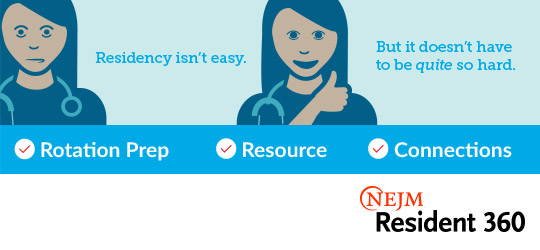August 27th, 2020
“Use The Force”: How Do We Teach in the Operating Room?
Vivek Sant, MD

Dr. Sant is a General Surgery Chief Resident at NYU Langone Health, Bellevue Hospital, and Manhattan VA in New York, NY.
As I embark on my chief year in general surgery, the aspect I look forward to most is taking junior residents through operations. I am grateful to have had excellent teachers over the past 5 years, and I appreciate the opportunity to pay forward this mentorship. But taking what you have learned and teaching someone else turns out to be a very different challenge than learning itself! Suddenly, you realize your attendings have been doing a lot of behind-the-scenes legwork to make the operations look simple and to set you up for success.
For me, two things have set apart the best teachers: patience and communication. Patience is intricately linked with humility and remembering that “I too was in this position once.” In some ways, this is inherent to one’s personality and character; everyone can strive to be more patient, but I think this quality is hard to change. On the other hand, while everyone enters residency with different baseline communication skills, with self-reflection and practice, communication skills are amenable to improvement.
Communication is hard. The following three practices help me communicate better in the OR and make teaching more enjoyable.
Do the heavy lifting upfront
Many within the surgical education community encourage trainees and supervising physicians to have preoperative briefings to discuss operative approach and focus areas. I try to have this discussion with my attendings and have found it quite helpful to my own learning. When I operate with a junior resident, I try to discuss my game plan with them in advance, or send them my notes on the specifics of the procedure the night before. I have found that this elevates the level of discussion we have in the OR — from “how should we enter the abdomen?” to “here’s how you can optimally position your body, give better tension with your left hand, and make a cleaner incision with your right hand, in order to enter the abdomen more efficiently.” Instead of just learning what the moves are, we get to focus on how to do them efficiently.
Own the responsibility for understanding
One of my college professors used to say, “The responsibility for understanding should be on the teacher, not the learner.” So rather than asking “Do you understand?” he would ask, “Have I explained myself properly?” Taking a resident through a cholecystectomy, I tried to explain a set of moves to him: “Use your hook to get around that structure, turn 90 degrees, pull out, and burn.” “Uh-huh.” Something didn’t sound quite right, so I paused and asked “Just to confirm, does that make sense – what I said?” “Maybe not completely.” We were able to clarify, and the honesty was appreciated. As surgery residents, we become really good at saying “yes” — If someone asks us to get something done, we say “yes” and then figure out how to make it happen. Sometimes residents apply the same mindset in the OR and might feel reluctant to speak up when they are confused. In these situations, it is all the more important for the teacher to confirm that their directions are understood.
 Tailor the approach to the individual and the situation
Tailor the approach to the individual and the situation
In these first 8 weeks of chief residency, I have become more attuned to the differences in personality, learning style, and experience among junior residents. In the OR, some residents appear very confident, whereas others are still finding their groove. Some have had more experience with certain procedures. Some respond very well to constant feedback, whereas others need encouragement. I myself have probably been in each of these positions at different points of residency! The best teachers understand that the needs of the learner are different for each learner — and in each situation! Modifying your teaching style constantly is hard, but once you figure out how to tailor your instruction, it is very gratifying to see your trainee achieve his or her maximum potential!
Despite my focus on clarity of communication, sometimes there are teaching moments that are beyond words and intellectual understanding. In the OR, one of my attendings occasionally exhorts, “Be an athlete!” It’s hard to explain exactly what he means or how it helps, but usually, I am able to re-attempt the maneuver with more agility and finesse! Last month when operating with one of my favorite attendings, I was struggling to laparoscopically drive a suture needle through a certain tissue into the right spot. He had me pause, he turned to me, and he said, “Use The Force!” The needle went exactly where it needed to go. Teaching and learning have a lot to do with patience and communication, but sometimes they verge on the realm of faith and understanding one’s heart!



Dr. Sant,
It’s just about as ineffective to ask “Have I explained myself properly?” as “Do you understand” — because both allow, in fact encourage, the responder to say “yes.”
The only way to find out if someone understands what you are asking is to ask them to explain it back to you. And making such a response forces the responder to engage her/his brain in a way that promotes real learning — like the difference between listening to a foreign language and speaking it.
I’m not a doctor, I’m a lawyer, but I’ve studied communication for my 45 years of practice. My daughter is a 3d year chief resident.
Best,
Jim Leach
Jim, great point and I favor that method of assessing understanding. In the OR, mechanical instructions with directionality can be hard enough to put into words, even by someone senior; so understanding whether your trainee understands, from their own wording of your instructions, can be quite a doozy!
Vivek, congrats on your first post!
We underestimate the power of teaching until we are forced to do it. Especially in a procedural setting where kinetics are to be taught. Even when doing something as short and simple as a paracentesis, I often feel the need to take over from the learner. I can’t imagine how that would feel in a longer surgery. Thanks for sharing some teaching pedagogy from the surgical fields for us!
Thanks Sneha! Next post will hopefully have even more crossover into the medical fields!
This is great, I still recall a bunion operation as a junior resident where I did not get this guidance and proceeded to do an incorrect dissection. It could have been a calamity but the attending took the time ( after the fact) to help me to correct the situation and understand the error, This would have been prevented by a discussion of principles and technique in advance,.The outcome was pretty good!
Thanks for the comment John! In cases of rapid clinical deterioration, we discuss this concept of “failure to rescue”. I am looking forward to discuss an analogous concept in relation to teaching, in a future blog post! Glad to hear you had mentors who took the time, even if after the fact!
This was an interesting read! It’s not often that you hear about the teaching aspect of surgery! Curious to hear about your experience with the after-action review process in surgery. Is there a debriefing session where you discuss what could have been improved either from a clinical skills standpoint or a teaching standpoint? Or is it more or less just the real-time feedback during the procedure?
Thanks Pranali! Some of my attendings do post-procedure debriefs. I’ve found the feedback I’ve received as a trainee is concordant with my own self-assessment. But giving feedback to the teacher is a very interesting idea! With the attending-resident power dynamic, I’m not so sure that would go over well, but certainly between chief and junior resident that would be very interesting!
Thanks for good sharing
You made several excellent points. It has been thirty years since I was in your shoes, but I do remember how much I loved teaching during my chief resident year.
The take home message is that we all have our own ways of communicating and prepping a trainee for a case. The most important thing is to do your best to set them up for success by providing a non- judgmental, nurturing environment for the trainee to learn via a system of graded responsibility.
And I do remember several times while having trouble placing that stitch, my senior resident telling me “let the force be with you.”
Best of luck for a wonderful chief year experience and in your career.
Thanks Mark!
Feel the force actually works. Be an athlete actually works. You just cannot leave it at that.
Feel the force: If you feel awkward doing something, become more aware of your self. Figure out what is uncomfortable, decide what needs to be changed. First, consider00 the height of the table.
If it is hard, or if it is not easy, do the same.
Focus on the tip of needle. Pretend that you are the tip. It works, yes.
Before you act, plan your action. In your mind, operate as if you are playing pool, call the shot before you execute it. It’s the rules of the game!
Be an athlete:
Most do not understand that the first thing that an athlete does is get their feet and body in position before catching, hitting a ball or making a shot. We talk about that. I like to talk about hitting a tennis ball because if you watch enough you can predict who is likely to lose a point. It is the player who is forced to hit the ball before they can get into position. Usually, the player cannot get their feet positioned before needing to strike the ball.
Now, this is part of feel the force. Why is this hard? Why do I feel awkward? Many times our feet and body are in the wrong place and we force ourselves to be a contortionist.
Miscellaneous:
If the needle is not long enough, you are struggling to retrieve it, then either you chose a needle that is too short or you are “over using it.”
Grab needles on the center 1/3 of the needle. In that region they are flattened to prevent the needle from spinning in a needle grasper. This harks back to the concept of not over “using a needle.”
Being careful is not the same as being afraid. Be careful.
Pronate and supinate to pass a needle through tissue. Try not to push it along the planned path.
Hold instruments the way they were designed to be held. They are most stable that way.
If you are doing fine work, rest your forearms on something. It is near impossible to use your large muscle groups and small muscle groups well at the same time – table height. Have sterile towels rolled tightly to be used as an arm rest, or whatever you want or can.
The case is done with your non-dominant hand. The other hand follows. The non-dominant hand sets-up the tissue for the dominant hand to cut or dissect.
Love your explanations and tips! It wasn’t until my third year that I truly started to appreciate the value of these details like footwork, “calling your shot” and the importance of the non-dominant hand!
Congratulations on your first post, Vivek!
I found it very insightful and practical. You are on point about using patience while teaching and tailoring one’s approach to suit their audience. Thanks for sharing!
Thank you, Masood.
Kudos to you for not only doing this but taking the time to think it through and not assuming just because you can operate you can teach
A point I have found helpful as very often the juniors get defensive is to let them know any comments being made are on a performance improvement not punitive enforcement basis
My wish for you is that you continue To communicate well not just with your colleagues but also with your patients
That is also a skill that unfortunately is not taught well but is critical to being a caregiver
Thank you – love your parallel re: communicating with patients – definitely a skill to be cultivated, and something I am hoping to address in a subsequent post. We currently learn by real-time experience and watching our mentors, but rarely receive feedback. OSCEs in med school identify those who need remediation, and everyone else misses out on a tremendous potential opportunity to improve.
Very good description and explanation of the “force”. I appreciate your understanding and emphasis of the importance body position, muscle use and instrument handling. Very nice.
Congrats Vivek! Teaching in the OR is not something I have experienced since I was a med student. We do have procedural education in internal medicine, but it is certainly not to the same degree. Frm a medicine perspective, I find that I am less affected by feedback on procedures because it feels less personal, but I understand that this is likely completely opposite for a surgeon. Some of your tips are definitely applicable outside the OR – setting expectations, owning responsibility as a teacher, and even explaining how to envision yourself as the maneuver itself (our equivalent would be, “Let’s channel ortho; what do we think they are going to do when they receive this consult?”) Looking forward to your upcoming posts!
Hah! Nice post from a young surgeon. I’ve been teaching orthopaedic surgery for many years and often urge the resident or fellow to “trust the Force” thus I enjoyed the essay. That happy intersection of preparation and execution is a magical zone of surgery and we have to overcome our demons to be excellent. I try to teach that this is fun when done right and helps people…very satisfying.